62% drop in COVID vaccination since free vaccination for 18-plus population kicked off on June 21, shows CoWIN data
On June 7, PM Narendra Modi announced free vaccination for the 18-plus population from June 21 onwards. CoWIN data shows the daily vaccine doses administered have dropped from 9 million on June 21 to 3.4 million on July 14. States like Gujarat, Bihar, Telangana, Haryana have reported a massive decline. Andhra Pradesh and Maharashtra show an increase. Details here.

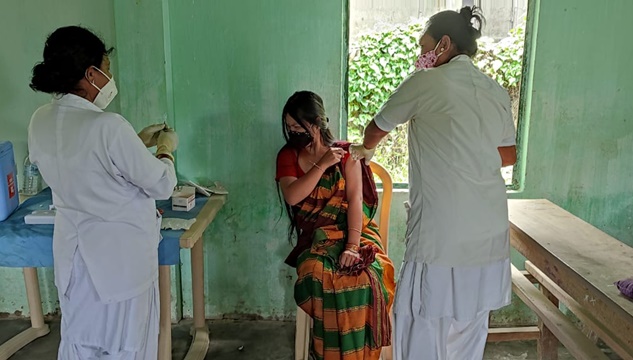
COVID19 vaccination in Sivasagar, Assam. Photo: @NSivsagar/twitter
More than three weeks since the central government-led free vaccination drive for people above 18 years of age in the country, COVID vaccination is dragging pace with a 62 per cent decline in daily vaccine doses administered since June 21. This is reflected in the official vaccination data uploaded on CoWIN (Covid Vaccine Intelligence Work), a web portal for COVID-19 vaccination registration, owned and operated by the Ministry of Health and Family Welfare.
As per the CoWIN, there is a 62 per cent decline in total doses administered in the country from June 21 to July 14. On June 21, nine million total doses were administered on the single day. This was reduced to 3.4 million on July 14.
It was on June 7 that Prime Minister Narendra Modi announced that starting June 21, the central government would provide free vaccines to states for all people above 18 years of age. Till then, the states were procuring vaccines from manufacturers for people above 18 years of age and the Centre was providing free vaccines for only those above 45 years of age. PM Modi’s announcement was expected to boost the vaccination drive in the country.
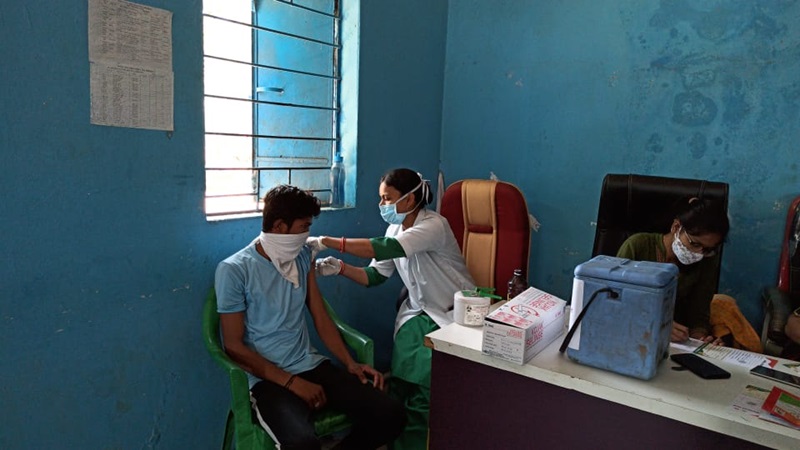
Also Read: Starting June 21, free vaccines to all states for people above 18: PM Modi
Interestingly, the number of first doses have registered a decline since June 21 but, second doses have registered a sharp increase. The data for first doses shows a decline of 75.6 per cent from 8.34 million as on June 21 to 2.03 million as on July 14. In the same time period, second doses increased by 74.6 per cent — from 835,571 to 1,459,366 doses.
A number of states are complaining of shortage of vaccine doses, which they claim was affecting the world’s largest vaccination programme.
84% drop in vaccination in Bihar; 98.6% in Gujarat
Yesterday, on July 14, hundreds of people outside a vaccination centre in Gopalganj district of Bihar resorted to throwing chairs at one another. Reportedly they had been waiting for hours since six in the morning for their turn to get jab. They feared the health workers would leave the vaccination centre without administering them the COVID19 vaccines, which led to scuffle.
Frontline health workers are also having a hard time. “Vaccination reh reh ke ho raha hai (There is no certainty in vaccination),” Shashi Yadav, president of ASHA Karyakarta Sangh, Bihar, told Gaon Connection. “For the past one week, many centres were shut because there were no doses. When people go for vaccination, they are told that the centres do not have vaccines,” she said.
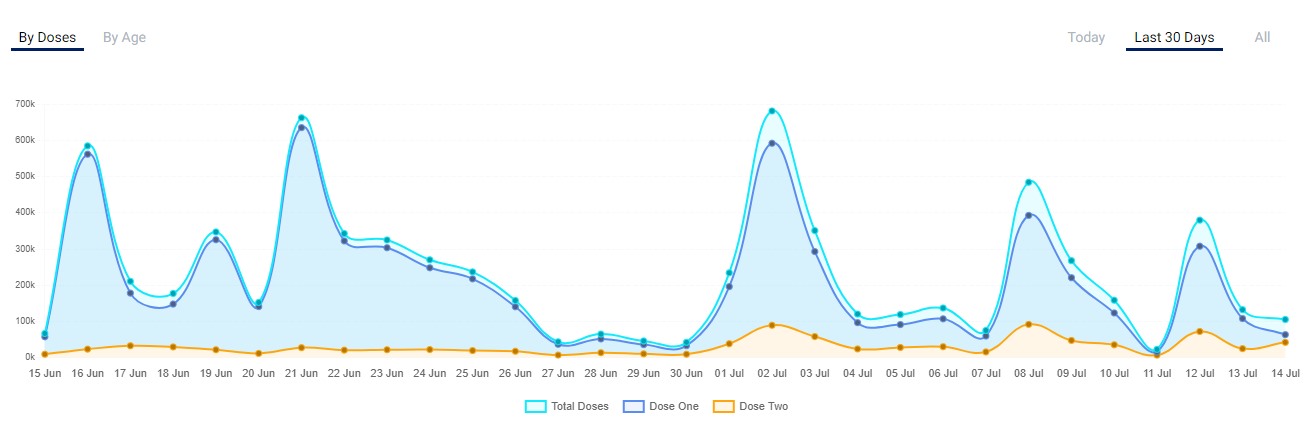
As per the data shared on CoWIN, Bihar has reported a drop of 84 per cent in daily doses administered from June 21 to July 14.
Meanwhile, a number of other states such as Gujarat have shown a massive decline — 98.6 per cent — in daily vaccine doses administered in the state in the same time period, as reflected in CoWIN data (see map). On 21 June, 522,189 vaccine doses were administered in the state, which dropped to 7,343 yesterday on July 14.
With over 1,763,355 vaccine doses administered on a single day on June 21, Madhya Pradesh topped the vaccination chart among other states of the country. But, from June 21 to July 14, daily vaccination numbers have dropped by 77 per cent.
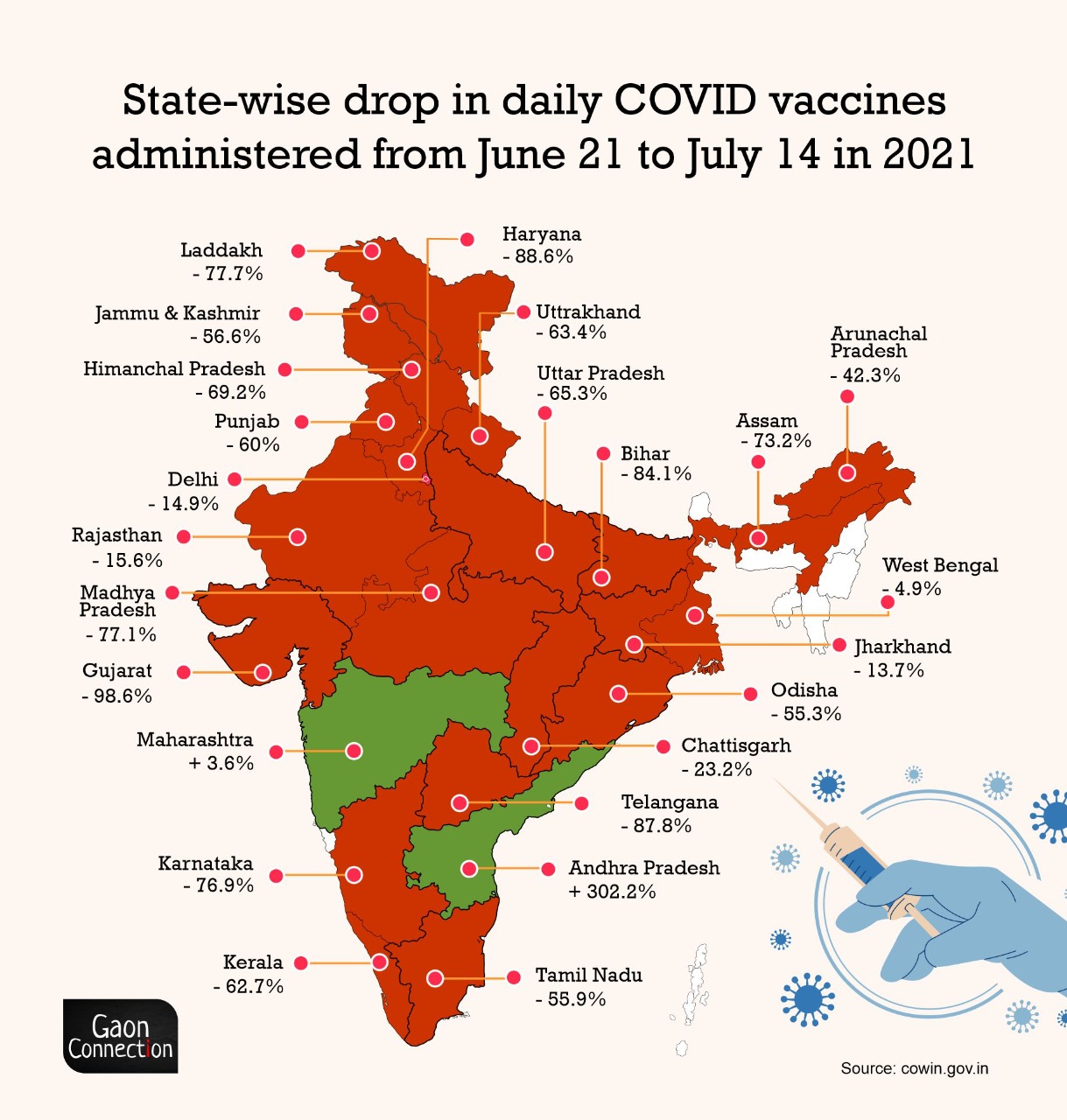
Why the drop in vaccination rates?
K Suresh Kishan Rao, public health specialist who has been associated with the country’s immunisation programme for the last 50 years, blamed the drop in vaccination numbers on three broad factors.
“Firstly, I suspect there was a plan to increase vaccination on one single day [June 21]. Hence, there is a possibility of reducing vaccination in the initial days before June 21. There was no reason why vaccination on one particular day was increased,” Bengaluru-based Rao, told Gaon Connection.
The CoWIN data shows fewer vaccine doses were administered prior to June 21. For instance, on 16 June, 3,550,880 daily doses were administered. A drop was observed the next day on June 17, when 3,278,259 doses were administered. This was followed by a slight increase on June 18, when 3,323,349 doses were administered in the country. Again a rise was observed on June 19, when 3,796,195 doses were administered.

June 20, being a Sunday, observed a sharp fall when 3,054,679 doses were administered. The very next day, on 21st June, 9,174,921 vaccine doses were administered across the country. However, on June 22, this again dropped to 5,639,859 doses, a drop of 38 per cent within a day.
According to Rao, the second reason for decline in vaccination could be the vaccine production issues with Bharat Biotech’s Covaxin. “They were not able to release even what they had promised. Therefore, vaccine supply has been in poor shape in the country for at least the past fifteen days,” he said.
Third reason, explained Rao, could be availability of a variety of vaccines (such as Sputnik V) but no guarantee for their second dose. Hence, they are not administering the first dose.
As per the Indian government’s data, over 87 per cent of the country’s total vaccine administered continues to be that of Serum Institute’s Covishied. However, only 12 per cent of the 386 million doses administered so far were of Covaxin. The remaining one per cent are others.
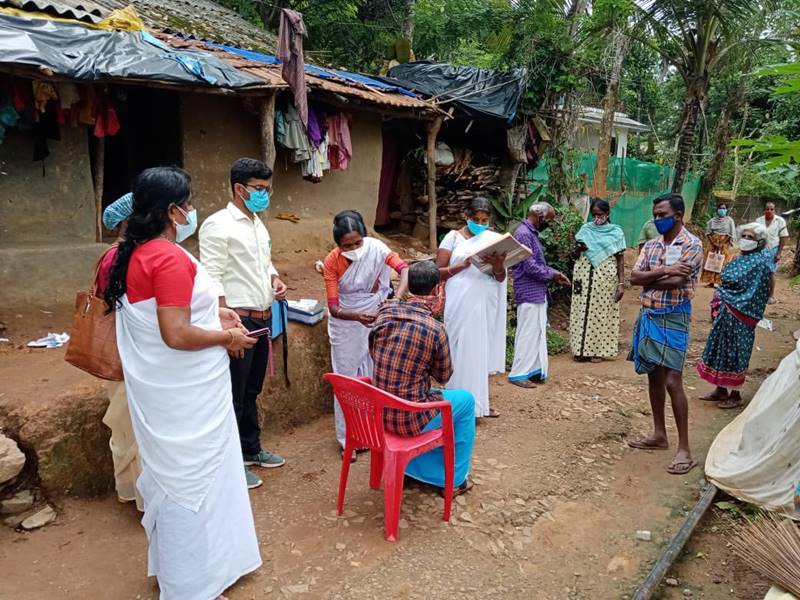
So far, only 5.4 per cent of the total Indian population is vaccinated. Nearly two months back on May 28, the then former Environment Minister Prakash Javadekar announced that the country will vaccinate its entire population by this year-end.
Also Read: India will vaccinate all by this December-end: Union Minister Prakash Javadekar
“This drop is an example of mismanagement at the grassroots level. Sometimes doses are increased, sometimes are decreased, there is no definite supply on ground. People are unable to prepare a plan at the local level. Many times they have to ask people to go back,” Rao lashed out.
Quoting NITI Aayog member VK Paul’s statement, Rao suggested the government should administer first doses to as many people at the earliest, as it would provide them some protection from various COVID variants other than Delta Plus.
Political blame game
Meanwhile, COVID vaccination has become a political issue with politicians and state governments blaming each other for what they term as vaccine shortage in the country.
Yesterday former Union Environment Minister Jairam Ramesh said that the “vaccine shortages are now hampering drives even in states friendly to Modi govt — Odisha, Andhra & Telangana, in addition to states governed by Opposition.”
Also Read: In the Nilgiris, local NGOs roped in to vaccinate tribal communities at their doorstep
Two days back, on July 13, Tamil Nadu Chief Minister MK Stalin wrote to Prime Minister Narendra Modi saying the southern state had not received vaccine doses proportionate to its population. Stalin has demanded a special allocation of 10 million vaccine doses.
On July 13, former Union Finance Minister P Chidambaram tweeted that of the total 30 districts in Tamil Nadu, 24 had reported as having run out of vaccines.
Apart from Tamil Nadu, the Delhi government has claimed to be facing a vaccine shortage. “There is a shortage of vaccines in Delhi. We received a small stock of 1.5 lakh Covishield vaccines on Monday (July 12) night… We have at the most around 1.68 lakh vaccines which can’t last beyond Tuesday or half of Wednesday. We have to shut down vaccination centres. We have the capability to administer three to four lakh vaccine doses a day,” Delhi health minister Satyendar Jain was quoted as saying in a media report.
Similarly, states such as Maharashtra and Odisha are also reporting vaccine shortages.

‘No vaccine shortage’
Despite falling vaccination numbers and several states complaining of vaccine shortage, Union Health Mansukh Mandaviya has denied allegations of vaccine shortages. Affirming that there was no vaccine shortage in the country, yesterday he said that such statements by state governments were not based on facts and intended to create panic among the people.
He also said that the central government informed the states about the availability of vaccines in advance.
Meanwhile, as per media reports, on July 13, the United States reportedly said that it is awaiting the Indian government’s permission to donate COVID19 vaccines to India. The Joe Biden administration has claimed to share 80 million vaccine doses from its domestic stockpile with foreign countries, including India.
Given the threat of the third wave looming large in the country, the significance of vaccinating people against COVID19 at the earliest is crucial.

